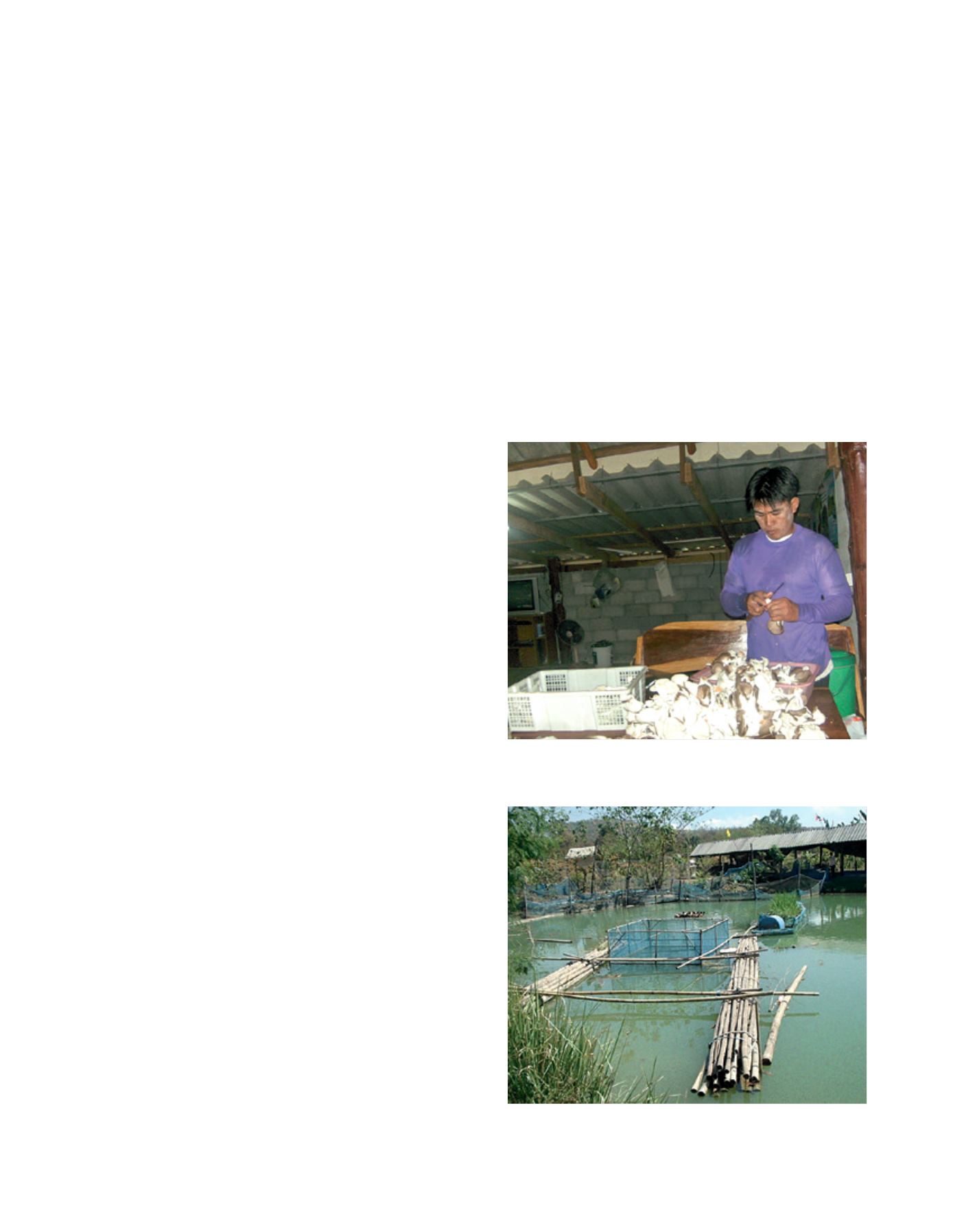

[
] 249
Security Strategy Framework for 2013-2016 which consists
of the following strategies:
• produce adequate food for sustainable domestic
consumption
• enable all Thai people to access food at all times
• enhance good quality and safe food production, reduce
food waste and promote appropriate food utilization
• promote the sustainable use of natural resources for
food production.
Sustainable agriculture in Thailand is classified according
to five models. Farmers can adopt one of these alterna-
tives for their farm practice and community empowerment,
depending on which is best suited to their context.
1. The integrated farming model
focuses on the production
of more than two activities at the same time, each support-
ing the other to manage risk and economic needs.
2. The organic farming model
entails chemical-free
production and farming.
3. The natural farming model
entails farming with an
emphasis on the rehabilitation of ecological balance and
minimal disturbance to nature.
4. Agroforestry
is a model for mixed agricultural produc-
tion and forestry to build up biodiversity.
5. New Theory agriculture
is the King’s theory which is
regarded as a new sustainable model of agriculture towards
self-reliance for rural households. The main purpose is to
make farmers more self-reliant through holistic manage-
ment of their land, while living harmoniously with nature
and within society. The complete practice has three stages:
• Sufficiency at the household level in terms of food, and
generating proportionate income from selling extra
crops and products beyond the necessary consumption
of the household. This provides basic self-immunity for
farmers against diverse adversities.
• Sufficiency at the community or organization level,
based on farmers’ cooperative activities with their
neighbours in the community and the sharing of each
household’s excess resources. This can be compared
to a cluster development of businesses in the same
locality with similar activities to achieve economies of
scale and scope.
• Sufficiency at the national level – the most advanced
stage. The community is encouraged to expand its
activities by reaching out to cooperative firms, banks
and other outside sources in order to develop a
production value chain.
Emphasis is also placed on farmers’ participation, capacity-build-
ing in farmmanagement, and increasing land use for sustainable
agriculture by at least 5 per cent in 2020. Implementation guide-
lines have been devised to promote the benefits of sustainable
agriculture, increase sustainable land and encourage awareness
of natural resources rehabilitation and conservation.
Activities include promoting the varieties of agriculture
activity from the five models. Learning processes have been
set up to let farmers learn about their local wisdom, social
capital, natural resources, environment, self-help and inde-
pendence, so that farmers can manage their farms based on
their own resources. Farmers are encouraged to produce
enough for household consumption before selling extra
crops and products to generate additional income.
Efforts are in place to encourage less use of chemicals
for agricultural production and to extend the application
of the ‘Three decreases, one increase and two practices’
methodology as follows:
• decrease the seed rate especially in rice production
(rice is the staple food of Thai people)
• decrease chemical fertilizer
• decrease chemical input
• increase soil fertility
• practice sufficiency economy
• practice bookkeeping.
The concept, ‘3 Forests, 4 Benefits,’ is also promoted for
farmland. The three forests to be planted should be one
The small scale mushroom production unit can be the source of household
protein food consumption and earn daily income, as well
Image: MOAC – Thailand
The pond is aimed to store rainwater and used to support dry season farming,
fisheries, swine and poultry production as well as water plants
Image: MOAC – Thailand
D
eep
R
oots
















